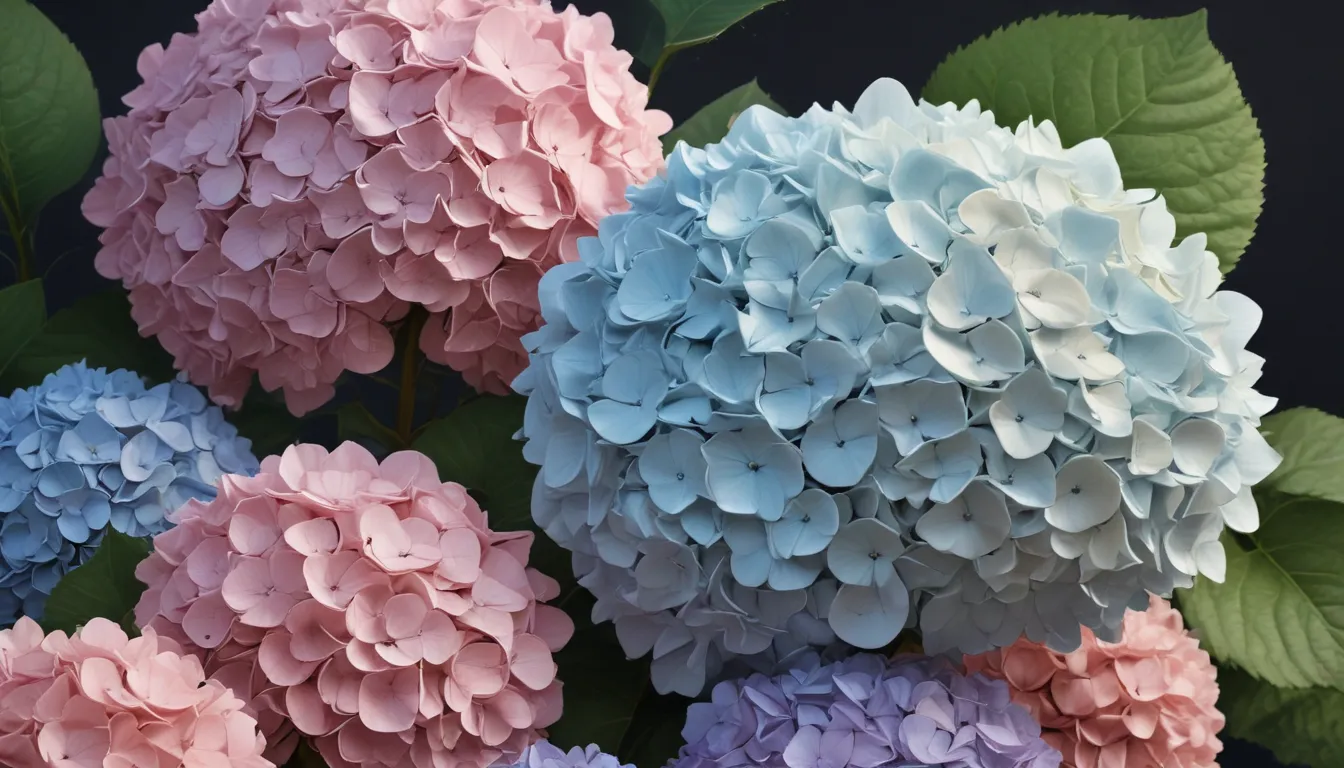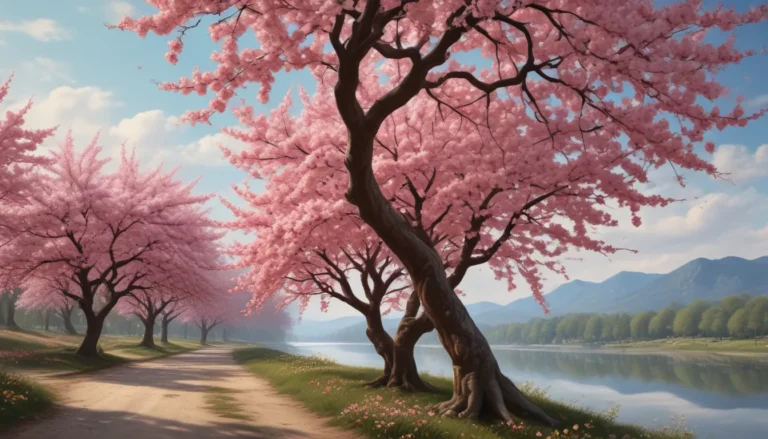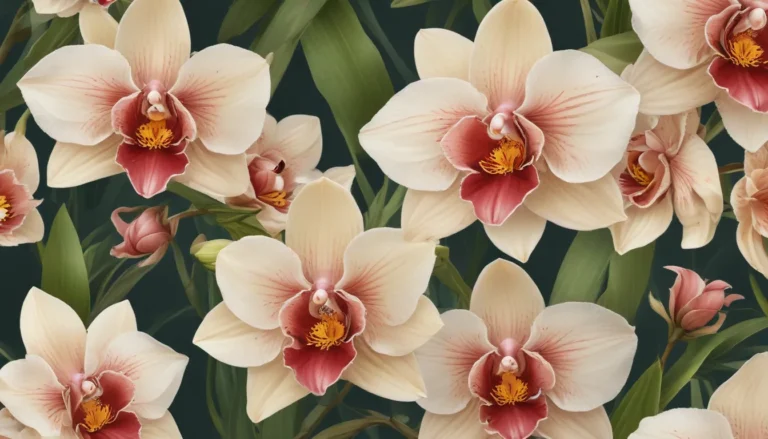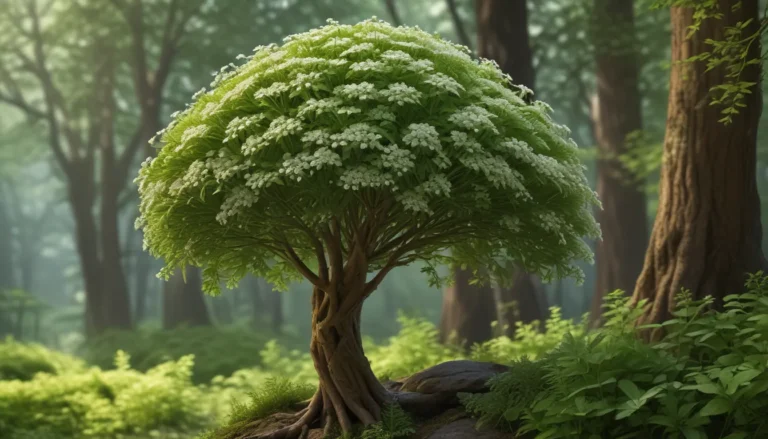The pictures we use in our articles might not show exactly what the words say. We choose these pictures to make you interested in reading more. The pictures work together with the words but don’t take their place. The words still tell you the important facts.
Hydrangeas are more than just a beautiful flowering plant. They are versatile, captivating, and rich in history. From their ability to change color based on soil pH to their long blooming season, there is so much to learn and appreciate about hydrangeas. In this article, we will explore 19 unbelievable facts about hydrangeas that will leave you in awe of these amazing plants.
The Colorful World of Hydrangeas
- Hydrangeas come in a rainbow of colors, from vibrant blues to delicate pinks. The color of their blooms can even change based on the soil pH.
- They symbolize love, gratitude, and heartfelt emotions, making them popular choices for special occasions like weddings and anniversaries.
- There are over 70 different species of hydrangeas, each with its own unique characteristics and growth habits.
The Fascinating History of Hydrangeas
- Hydrangeas have been cultivated for centuries, with records dating back to the 18th century. Their popularity continues to grow.
- They are native to regions in Asia and the Americas, including Japan, China, Korea, and various parts of North and South America.
The Unique Characteristics of Hydrangeas
- Hydrangea blooms can change color based on the soil pH, with acidic soils producing blue blooms and alkaline soils producing pink or purple blooms.
- They attract pollinators like bees, butterflies, and hummingbirds, playing a vital role in supporting local ecosystems.
- Hydrangeas can thrive in both sun and shade, making them versatile plants for any garden.
The Versatility of Hydrangeas
- Hydrangeas are popular in floral arrangements due to their large, showy flower heads. They can be used alone or combined with other flowers for stunning bouquets.
- Some cultures believe hydrangeas have medicinal properties and use them for various purposes, including treating urinary tract infections.
Growing and Caring for Hydrangeas
- Hydrangeas require regular watering, especially during hot and dry periods, to ensure healthy growth and vibrant blooms.
- They can be grown in containers, allowing you to enjoy their beauty even in small spaces like balconies or patios.
- Most hydrangea varieties are deciduous, shedding their leaves during winter before blooming again in the spring.
Crafting and Decorating with Hydrangeas
- Certain varieties of hydrangeas can be used to create natural dyes, producing hues of blue, purple, and pink for eco-friendly crafting projects.
- When properly dried, hydrangea blooms retain their color and shape, making them perfect for everlasting floral arrangements and wreaths.
Hydrangeas are truly remarkable plants that continue to captivate us with their beauty and charm. They are not just flowers in a garden; they are symbols of love, gratitude, and timeless elegance. Whether you are a gardening enthusiast or someone who appreciates the beauty of flowers, hydrangeas are a wonderful addition to any outdoor space.
So why not start growing hydrangeas today? Discover the joys of cultivating these stunning plants and enjoy their beauty right in your own backyard. With their fascinating facts, stunning blooms, and versatile varieties, hydrangeas are sure to bring joy to your garden.
FAQs
-
Can hydrangeas grow in full sun?
Yes, hydrangeas can grow in full sun, but they also appreciate some shade during the hottest part of the day. -
How often should I water my hydrangeas?
Hydrangeas prefer consistently moist soil, so watering them once or twice a week, or as needed, is recommended. -
Can I propagate hydrangeas from cuttings?
Yes, hydrangeas can be propagated from softwood or hardwood cuttings, depending on the time of year. -
How do I change the color of my hydrangea blooms?
The color of hydrangea blooms can be changed by altering the soil pH. Acidic soil produces blue blooms, while alkaline soil produces pink blooms. -
When should I prune my hydrangeas?
Pruning hydrangeas depends on the variety. Some hydrangeas should be pruned in early spring, while others are pruned after they bloom. -
Are hydrangeas deer-resistant?
While no plant is completely deer-resistant, some hydrangea varieties are less appealing to deer due to their texture and scent. -
Can I grow hydrangeas indoors?
Yes, you can grow hydrangeas indoors, but they require bright light and consistent care to thrive. -
How long do hydrangea blooms last?
Hydrangea blooms can last for several weeks or even months, depending on the variety and conditions. -
What are some companion plants for hydrangeas?
Some companion plants for hydrangeas include hostas, ferns, astilbes, and heucheras, as they thrive in similar growing conditions. -
Can I grow hydrangeas in containers?
Yes, hydrangeas can be grown in containers, but they require adequate drainage and regular watering.
Hydrangeas are a true delight for any gardener or nature lover, offering beauty, versatility, and a touch of magic to any outdoor space. Explore the wonders of hydrangeas and watch as these amazing plants transform your garden into a haven of stunning blooms and vibrant colors. Get ready to be amazed by the enchanting world of hydrangeas!






